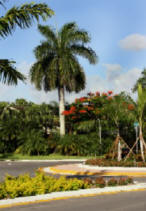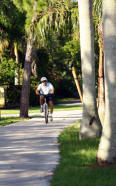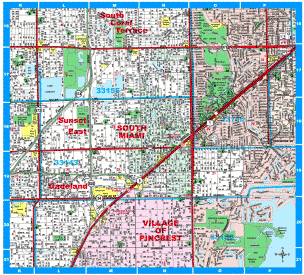SOUTH MIAMI HOMES & REAL ESTATE
Real Estate Located in the City of
Pleasant Living
South Miami Homes for Sale or Rent
See the most up to date
inventory of homes for sale and rent in South Miami.
The links below will contain all the available listings
with price information for the homes located in South
Miami. The real estate inventory is updated
daily.
Click on the links to access
detailed information about the homes for sale and
rent in South Miami. You
will find all the real estate information including:
price, real estate taxes, year built, location with map,
property floor plan size, photo gallery, request a
showing and more.
South Miami Homes For Sale by Price Range
|
$200,000 to $499,999 |
Home listing |
|
$500,000 to $599,999 |
Home listing |
|
$600,000 to $699,999 |
Home listing |
|
$700,000 to $799,999 |
Home listing |
|
$800,000 to $899,999 |
Home listing |
|
$900,000 to $999,999 |
Home listing |
|
$1,000,000 + |
Home listing |
South Miami Homes For Rent by Price Range
|
$1,500 to $1,999 |
Rent listing |
|
$2,000 to $2,999 |
Rent listing |
|
$3,000 to $3,999 |
Rent listing |
|
$4,000 to $4,999 |
Rent listing |
|
$5,000 to $5,999 |
Rent listing |
|
$6,000 to $6,999 |
Rent listing |
|
$7,000 to
$20,000 |
Rent listing |
About the City of South Miami Florida
The City
of South Miami, approximately 3 miles south of the City
of Miami, encompasses 2.5-square miles within Miami-Dade
County. It borders the University of Miami’s main campus
and the cities of Coral Gables and Pinecrest. U.S.
Highway 1 (South Dixie Highway) carries tens of
thousands of vehicles through the city on a daily basis.
South Miami, incorporated in 1927, is one of the
County's oldest municipalities with a permanent
residential, tri-ethnic population of approximately
10,500. The “town center” area east of US1 is a vibrant
shopping, dining and entertainment venue with a hometown
ambiance. Two major hospitals within the city provide
employment and services to people throughout the county
and beyond.


History of the City of South Miami
Although
Native Americans had doubtlessly roamed the area for
centuries, the recorded history of South Miami began at
the turn of the century when the rich farmlands of South
Dade lured pioneers down through Little Hunting Ground
(later known as Coconut Grove) to Big Hunting Ground
(now known as Cutler).
In 1897,
W.A. Larkins, an early pioneer and founder of South
Miami, brought his family into the lush wilderness at
the southernmost end of the wagon trail that is now the
Ingraham Highway. He started a small dairy and a year
later established a post office near what is not
Cocoplum Circle. Upon the completion of the Miami to
Homestead extension of the Florida East Coast Railroad
in 1906, Larkins bought the property west of what is now
Red Road and south of Sunset Drive and established the
first grocery and general supply store located in the
area. Additionally, the US Government moved the post
office to that location, and the surrounding community
was named Larkins in honor of the its Postmaster.
By 1917,
the population of Larkins had swelled to 350. As with
much of Florida, the real estate boom of the Roaring
'20's had a large impact on Larkins. Land values reached
an all-time high when a ten-acre tract sold for
$100,000. The epicenter of the boom was near the
original Riviera Theater, which is more commonly
referred to today as the Shops at Sunset Place.
Beginning in the mid-1920's, many citizens of Larkins
expressed a desire to incorporate their burgeoning
community. In March of 1926, a group of qualified voters
met and voted affirmatively to annex an area of
approximately 6 square miles, bounded on the East by Red
Road, on the South by SW 104 Street and Kendall Drive,
on the West by Ludlam and the Palmetto and on the North
by Bird Road. The citizens of the newly incorporated
area named the new municipality the Town of South Miami
and elected Judge WA Foster as Mayor and JL Paxson, JW
Barrs, John Myers, WG Stang, RL Martin, JB Janes and
Harold Dorn as Aldermen. The Town Council immediately
went to work. Within weeks, it established a Town Seal;
formulated a town code; rented a building to be the Town
Hall; purchased a fire truck; and appointed a health
officer, engineer and an attorney.
The Great
Hurricane of September 1926 dealt a punishing blow to
the Town of South Miami. Only the courage and
determination of its citizens permitted the Town to
survive the disaster. Although the Town requested
federal assistance, asking Congress to "relieve the
people of their income tax for the current year", none
was received. To make matters worse, the Florida East
Coast Railway station burned down, leaving the town
without a station for many years. South Miami is a small
municipality of approximately two square miles in
Miami-Dade County, Florida, tucked between the vastness
of Kendall and the confines of Coral Gables. Once known
as “Larkins,” one of the earliest settlements in the
county, the community generates a feeling of permanence.
The city of South Miami has grown from a small farming
community to a vibrant suburb with quiet neighborhoods
and a popular shopping and restaurant district.
Although
South Miami is primarily a residential area with a
population of some 12,000 people, its commercial hub at
the intersection of Sunset Drive and Red Road, anchored
by a beautiful shopping mall, is always alive with
activity . The city of South Miami is experiencing
tremendous growth and redevelopment, as people have
recognized the unique “small-town” atmosphere of the
“City of Pleasant Living”. Many citizens became
dissatisfied with the municipality's status as a town,
feeling that the "town" was being ignored by the State
and Federal Governments, and began calling for a change
to a "city". Therefore, the Town of South Miami prepared
a new charter and presented it to the Florida
Legislature during its 1927 Session. The Florida
Legislature approved the charter, and on June 24, 1927,
the Town of South Miami ceased to exist and the City of
South Miami was born.
The early
1930's signaled the beginning of what was probably the
most turbulent and uncertain period in South Miami's
history. Financial problems and local dissension
generated a temporarily successful movement to abolish
the City in 1931. In fact, all City functions were
suspended for approximately six months until the courts
intervened and ordered the City to resume operations. On
May 17, 1932, Judge Worth A. Trammell ordered the Mayor
and Council to resume City business because no one had
made any provisions to retire the City's debts!
Interestingly, one of the largest debts was to the
LeFrance Fire Engine Company, from which the City had
purchased a fire engine six years earlier. South Miami
may be the only city in the nation to be saved by a fire
engine with no flames in sight! In 1933, in an effort to
lessen municipal responsibilities and to appease many
concerned citizens, South Miami's total area was reduced
from its original six square miles to just over three
square miles. Later, in 1937, the City's size was
reduced again, as many dissatisfied northern residents
sued out of the City. These actions created most of the
irregular boundaries that still characterize South Miami
today.
During
World War II, South Miami's development temporarily
slowed, but the post-war period brought exponential
growth. The tremendous impacts of growth soon caused the
City to realize that its original charter was
inadequate. Consequently, a committee was appointed to
study the existing charter's shortcomings and recommend
improvements. The committee recommended an entirely new
charter providing for a city manager-commission form of
government. The new charter and form of government were
instituted on July 31, 1953, upon the approval of a
citizen referendum. Since the 1950's the City and its
charter have experienced several changes, but have
largely remained true to the pioneers' vision. Today,
much like the post-war period, the City of South Miami
is experiencing tremendous growth and redevelopment, as
people have recognized the unique "small-town"
atmosphere of the "City of Pleasant Living". The City
stands poised to lead by example in the next millennium.
Demographics Geographic and Census Data for South Miami,
Florida
The
geographic coordinates of South Miami, a city in
Miami-Dade County in the Miami-Fort Lauderdale metro
area, are Latitude: 25.707°N Longitude: -80.293°W The
City is in the Eastern Standard time zone and has a
sub-tropical climate.
Total Area: 2.30 square miles
Population: 10,741 people (2000 census*)
Caucasian: 38.9% Latino: 34.4% African descent: 24.7%
Asian descent: 1.4%
11,355 (2003 estimated population)
Median age for residents: 37.4 years (this is older than
average age in the U.S.)
Families (non-single residences): 60.3% of the
population
Median household income: $42,488 (higher than National
median income of $41,994)
Form of Government: City Manager/ Commission
South Miami Homes Real Estate is a hidden treasure within
South Florida

South Miami Departments
Office of the City Manager
Building
City Clerk
Code Enforcement
Finance
Human Resources
Parks & Recreation
Planning & Zoning
Police
Public Works & Engineering
City of South Miami Florida Services
Public Safety
Code Enforcement
Building Permits
Zoning Applications
Adult Recreation Programs
Youth Recreation Programs
The After School House
Passports & Photos
Notary Public
Fingerprinting
Background Checks
Photocopies & Laminating
Voter Registration
Occupational Licenses
Vendor Registration
Schools in South Miami and Vicinity
Miami-Dade County Public Schools
Public K-12 Schools in or near South Miami
Private K-12 Schools in or near South Miami
Miami-Dade Community College
Florida International University
University of Miami
Miami-Dade County Library System
About the South Miami Branch Library
Locate Schools or Libraries |


